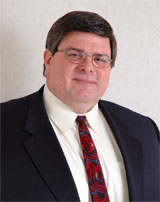MAR 26, 2018
Structuring Physician Employment Agreements: An Interview with Mark Kropiewnicki
 Changing demographics in ophthalmology contribute to high demand for new associate ophthalmologists. What does the competition mean for ophthalmologist employment agreements? We talked to contract expert Mark E. Kropiewnicki, JD, LLM.
Changing demographics in ophthalmology contribute to high demand for new associate ophthalmologists. What does the competition mean for ophthalmologist employment agreements? We talked to contract expert Mark E. Kropiewnicki, JD, LLM.
An attorney with and president of Health Care Law Associates, P.C., Kropiewnicki is also a consultant with and vice president/treasurer of The Health Care Group, Inc. He is on the Academy's Consultant Directory
- Are you seeing any new trends in ophthalmologist employment agreements?
Almost 50 percent of ophthalmologists are age 55 years of age or older, a great many of whom want to retire or at least slow down. As a result, numerous ophthalmology practices throughout the country (both groups and solo practitioners) are now looking to hire new associate ophthalmologists. They will continue to do so for years to come. Unfortunately, the supply of new ophthalmologists does not seem sufficient presently to fill the needs of all the practices wanting to hire a new associate ophthalmologist.
This high demand for new associate ophthalmologists, and the relatively limited supply of them, leads to the second trend in ophthalmologist employment agreements. The supply/demand imbalance has caused a significant increase in the starting base salary over the last eight to 10 years: between 40 and 60 percent (perhaps more) for ophthalmologists.
- What is the greatest obstacle to attracting top physician talent?
Practices face a lot of competition. With many offices wanting to hire a new associate ophthalmologist, the best candidates usually have multiple offers to consider. Therefore, not all practices wanting to hire top talent can do so.
In addition, location presents a major obstacle to attracting top ophthalmologist talent for some practices. A practice in a less desirable location may not be able to attract any ophthalmologist, much less top talent. Practices in such locations may spend years searching for someone to fill their need. If they are fortunate enough to find someone, they may have to pay a significantly higher starting base salary — perhaps up to 40 or 50 percent more than practices in more desirable geographical locations.
- What’s the most seamless way to structure physician employment agreements?
If you expect to offer an attractive and competitive employment agreement, the practice needs to find out the current "normal" terms for an associate joining a practice. The practice's employment agreement needs to be fair, reasonable and competitive in today's environment if you expect to attract and hire a new associate ophthalmologist.
The best way to learn what constitutes such an agreement is to involve an experienced attorney/consultant with significant experience doing new associate employment agreements for ophthalmologists. A local attorney rarely knows what employment terms are "normal" and competitive; if you trust one without the right expertise, the hiring endeavor may prove futile.
During our webinar, Structuring Physician Employment Agreements: What's Best for You and the Practice, I will describe in greater detail what constitutes fair, reasonable and competitive new-associate employment agreements.
- Do you have any pearls for those who are looking to hire or onboard their next physician?
With rare exception, you need to abide by any written or verbal promises you make. Breaking your promise can readily cause a candidate to reject your offer and take a position elsewhere. Even if the candidate takes the job, the short-term benefit of reneging on a promise is not worth the long-term damage to your relationship with the person you hope and expect will be your future partner.